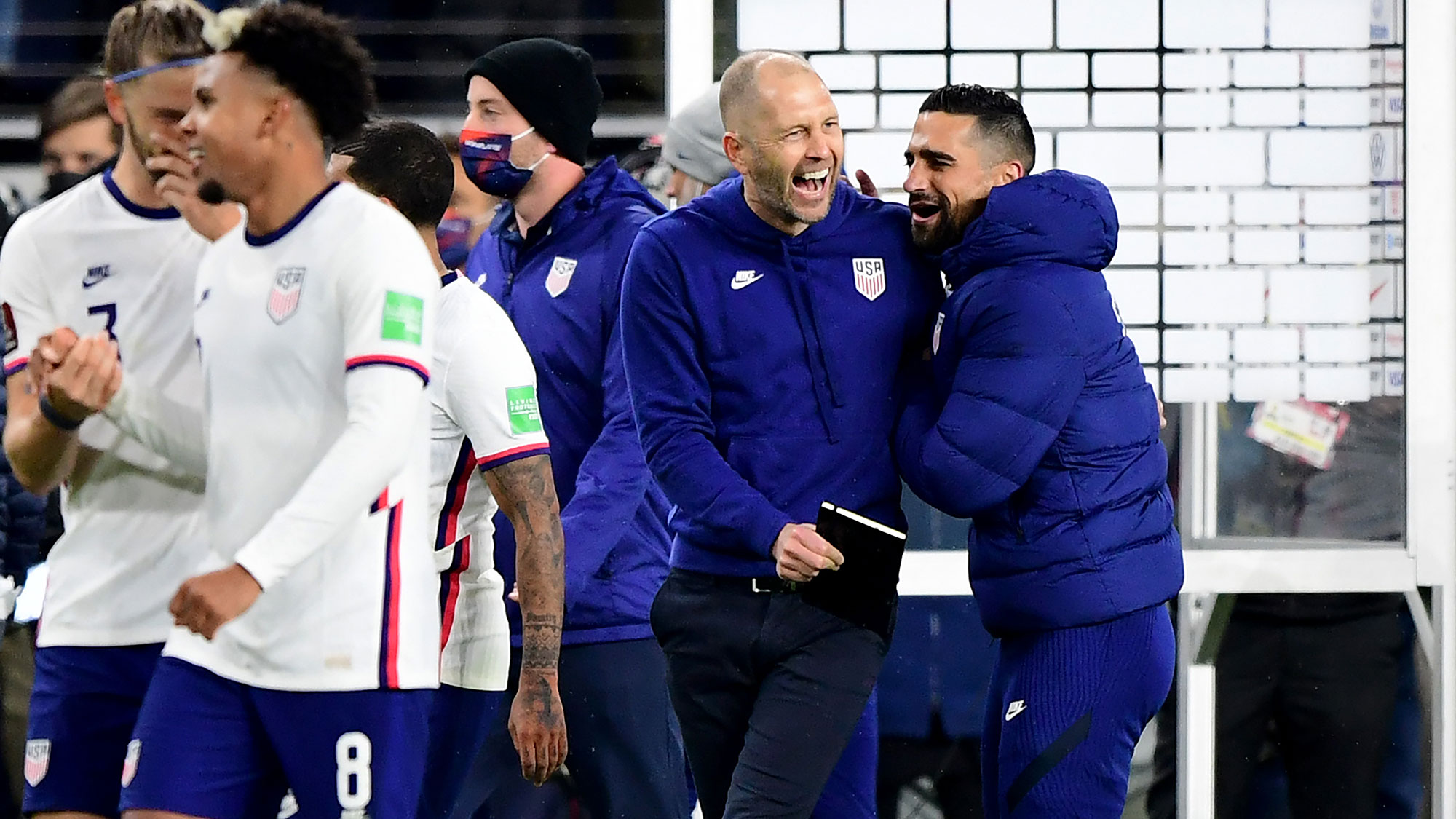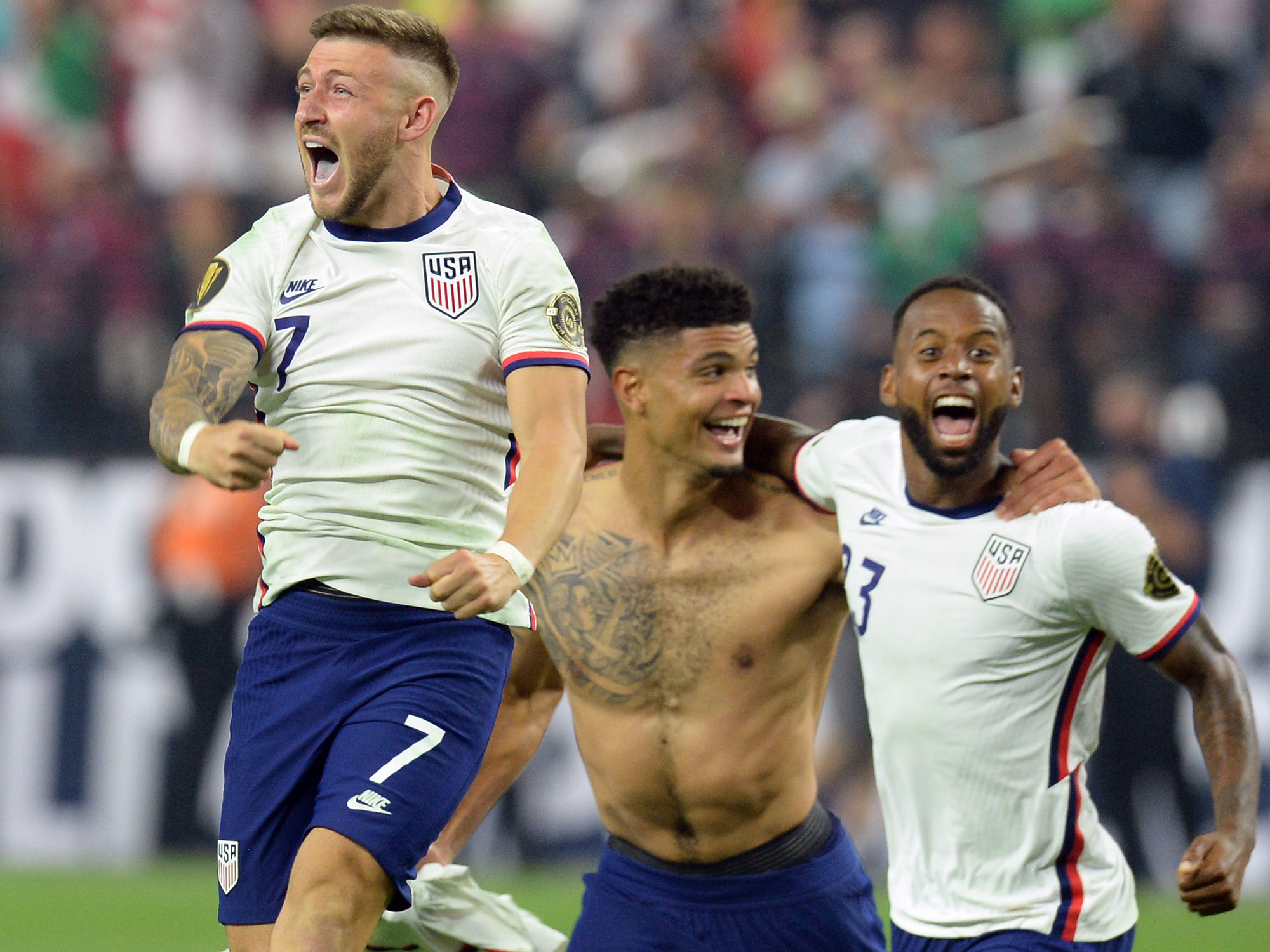USMNT's Roller Coaster Remains on Track for World Cup Qualification

It says something about the U.S. men’s national team that members were disappointed by Tuesday’s 1–1 World Cup qualifying draw in Jamaica. Points are tough to come by on the road in Concacaf, but this young squad doesn’t put a cap on its confidence, expectations or ambition.
“I felt like we could’ve won every game so far in qualifying,” midfielder and de facto captain Tyler Adams said in Kingston.
But it also says something about the Americans that they haven’t—that they struggled to impose themselves on a less talented Reggae Boyz squad and may have been fortunate to escape with a point. Although the U.S. took an early lead on a goal by Tim Weah, the hosts replied with a breathtaking strike from West Ham United’s Michail Antonio, then successfully bypassed the U.S. press with a series of long balls before nearly winning the game with a late header that was ruled out by the referee.
Qualifying is a roller coaster, coach Gregg Berhalter said. So was the tie in Kingston and the November window at large, which began with last week’s 2-0 dismantling of Mexico in Cincinnati. That isn’t just coach speak. It’s an accurate assessment. The U.S. is now just past the midpoint of Concacaf’s Octagonal, which will send the top three finishers directly to the Qatar World Cup and an additional side to an intercontinental playoff.

It’s been almost all ups and downs, from the lows of the frustrating home draw with Canada, Weston McKennie’s September suspension and the whole team’s awful night in Panama, to the historic highs of that brilliant second half in Honduras, the comeback against Costa Rica and then the next-generation “Dos a Cero” in Cincinnati. Through it all, Berhalter has started 30 different players and given 26 their World Cup qualifying debut. It’s been a struggle at times, and the 4-1-3 record could, and maybe should, be better. But it’s also quite an achievement for a young team that’s learning as it goes. Toss in the fact that the Americans so frequently take the field without many of their highest-profile players (Gio Reyna and Sergiño Dest missed this month’s games and a recovering Christian Pulisic was a second-half substitute), and there are plenty of reasons to be optimistic, or at least satisfied, with the performance so far.
The U.S. is in second place with six qualifiers remaining, and it’s on pace to reach Qatar.
“I think we’re on the right track,” Berhalter said in Kingston. “[We’re] basically having to get the guys experience on the fly. We’re playing an Olympic-age team. The average age again was Olympic-eligible—22 [and 341 days]. It’s really learning as you go, and the guys have done a great job adapting to that. We’ve had very strong home performances. We’ve gotten five points on the road already, in four games.
“We’ll use the winter and spring of ’22 to hopefully get qualification, but the guys have been great,” the manager continued. “When I look at the year of ’21 in general, you know we lifted two trophies. We’re in the position where we want to be (in) World Cup qualifying. We’ve won 16 games already [tying the single-year U.S. record]. The guy have done a great job. It’s all down to them and their commitment to the program.”
But like the response to Tuesday’s tie, there should be a bit of concern woven in to the optimistic outlook. Second place is good. It’s also somewhat treacherous. Although there’s now some separation between the top four and bottom four in the Octagonal, the U.S. is only one point above fourth place, which would mean a one-game, neutral-site playoff against a team from South America, Asia or Oceania next June (the draw is Nov. 26). A worst-case scenario of a trip to Qatar, a potential site, for a winner-take-all game against the likes of Uruguay or Japan with a World Cup berth on the line is hovering over the horizon.
Among the six games remaining for the U.S. are the three that arguably are the toughest on the Octagonal schedule: at Canada on Jan. 30, and then at Mexico (March 24) and at Costa Rica (March 30). The Canadians are vastly improved and undefeated in qualifying, and the difficulty of winning in Mexico City and San José is long established. The U.S. is a combined 0-21-4 in World Cup qualifiers in those two inhospitable cities. And so the margin for error at home is pretty much gone, and a point or two on the road very well may be necessary as well. There’s still a lot of work left to do.

“When we look at the table, we’re obviously still in a good position with games to be played still,” Adams said. “We have a lot home games coming up. So in this next window, it’s going to be super important we continue to win our home games and get points on the road when we can. But yeah, we just need to continue winning as many games as possible.”
The location of those three home qualifiers is still be determined. The plan for the January/February window depends on Canada and where it chooses to host the match that’s in the middle of the three games. Berhalter and U.S. Soccer want to minimize travel, especially for players based in Europe, and so would prefer to cluster the home games against El Salvador and Honduras as close as reasonably possible to the Canada game. But there’s still no official word about whether Canada plans to make the U.S. come west to Vancouver or Edmonton (the site of Tuesday’s frigid win over Mexico), or whether it’ll opt for the Toronto/Hamilton area.
On Wednesday, The Washington Post reported that Hamilton’s Tim Hortons Field was the leading candidate. If that’s the case, the U.S. likely will stick to the center/southeast of the country for its two home dates. The U.S. Soccer Federation has a plan A and B. The choice hinges on Canada’s. Sports Illustrated is awaiting clarification from Concacaf concerning what deadline, if any, the Canadian Soccer Association must meet.
Before then, Berhalter and the player pool will be busy. It may feel like it’s time to exhale with the Octagonal’s midpoint reached, the holidays upon us and the next qualifying window two months away. But there’s no real break. While the European seasons continue, Berhalter will bring a collection of domestic-based players to Southern California for a Dec. 5-18 camp that’ll conclude with a friendly against Bosnia-Herzegovina at the LA Galaxy’s Dignity Health Sports Park. It’ll be a chance for established national team players like Walker Zimmerman, Miles Robinson, Matt Turner, Kellyn Acosta, Paul Arriola, Sebastian Lletget, Cristian Roldan, MLS Young Player of the Year Ricardo Pepi and others to stay fit and fresh. It’ll also give Berhalter the chance to expand the pool ahead of 2022 with the likes of D.C. United’s Kevin Paredes, the New York Red Bulls’ Caden Clark, the San Jose Earthquakes’ Cade Cowell and Louisville City’s Jonathan Gomez among the youngsters who might get a look.

Shortly after New Year’s, the U.S. will be back together for another MLS-heavy camp, perhaps in the Phoenix area (the site hasn’t been confirmed). When the qualifying window opens toward the end of January, MLS men who aren’t part of Berhalter’s Octagonal plans will make way for players arriving from Europe. It’s obviously difficult to tell what the U.S. roster will look like at that point, in large part because players’ health and availability have been so unpredictable. The good news for Berhalter is that additional talent has emerged over the past three months. It wasn’t long ago that Robinson, Pepi, Yunus Musah, Brenden Aaronson and Tim Weah, for example, were unproven or closer to the periphery of the qualifying picture. Now they’re core players.
Berhalter has fielded eight different starting lineups across the eight qualifiers so far. It’s no easy task to establish a foundation, gain the requisite experience and see who’s up to the qualifying task while it’s all going on. Some stumbles should be expected. Knowing that, and even while lamenting that, the U.S. is mostly satisfied about where it stands.
“The first window was a major learning experience for us, in terms of how to mentally prepare for these three games and get through the travel and everything—we needed that window. And we got five points, went undefeated. But we dipped below two points per game, and then the next two windows we maintained the two-points-per-game ratio and that’s pretty good. That’s pretty good, man, when you think about the youth of this group, the inexperience of this group in Concacaf qualifying,” Berhalter explained.
"There’s ups and downs of qualifying. We talk about the roller coaster that it is,” he continued. “But we just kept slowly and steadily climbing. Been happy with most of the home performances, or the late home performances. We’ve done really well. Our road record is pretty much like expected. We would’ve loved to have had that one point in Panama. But we’ve been resilient and this group has character. It’s a really fun group to work with and we’re on the right track.”
More Soccer Coverage from Brian Straus:
